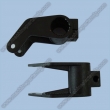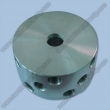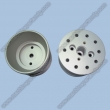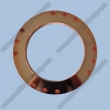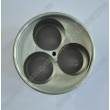1.The first rudimentary milling machines were created and utilized in the early 1800s as a way to file metal parts in a uniform fashion. Although there were not many advances, in 1861 Brown & Sharpe created the first all-purpose mill that had travel in the X, Y and Z axis, which was revolutionary at the time. The 1980s brought the creation of the CNC mill which was a mill controlled by a computer that fed a program to the automated controls. This allowed for fewer mistakes and more consistent machining.
Function
2.A mill can cut metal, wood or plastic with cutting tools such as end mills, which are specifically designed for roughing and finishing material, and drills. The head can be tilted for angled cutting and drilling and you can rotate it for betting positioning over your work piece. Mills are multi-purpose devices and crucial in any machine shop environment.
Quill and Quill Feed
3.The quill contains the tool and spindle being used for the cutting process. It moves in a vertical fashion and is controlled by the quill feed. By using this handle, you can raise and lower the tool to the desired depth. There is also a lock for this quill where you can cut multiple production pieces to the same depth.
Work Table
4.The work table is where the raw material is held for machining and can be moved in three directions, X, Y and Z. X is a movement from left to right, Y is front to back and Z is up and down. The table can be manipulated in many ways and moved quite far in any of the possible directions for maximum flexibility in cutting. The table also contains slots to secure vises for work-holding.
Head, Motor and Spindle
5.The head is the main top area of a manual mill, the most popular mill in use today. It contains the motor as well as the spindle. The motor uses a belt-driven system to rotate the spindle and speeds can be from 50 to over 4000 RPM depending on the gear used. The spindle moves in either a clockwise or counter-clockwise position and is the part responsible for allowing the tool to cut as the tool itself is attached to the spindle.



